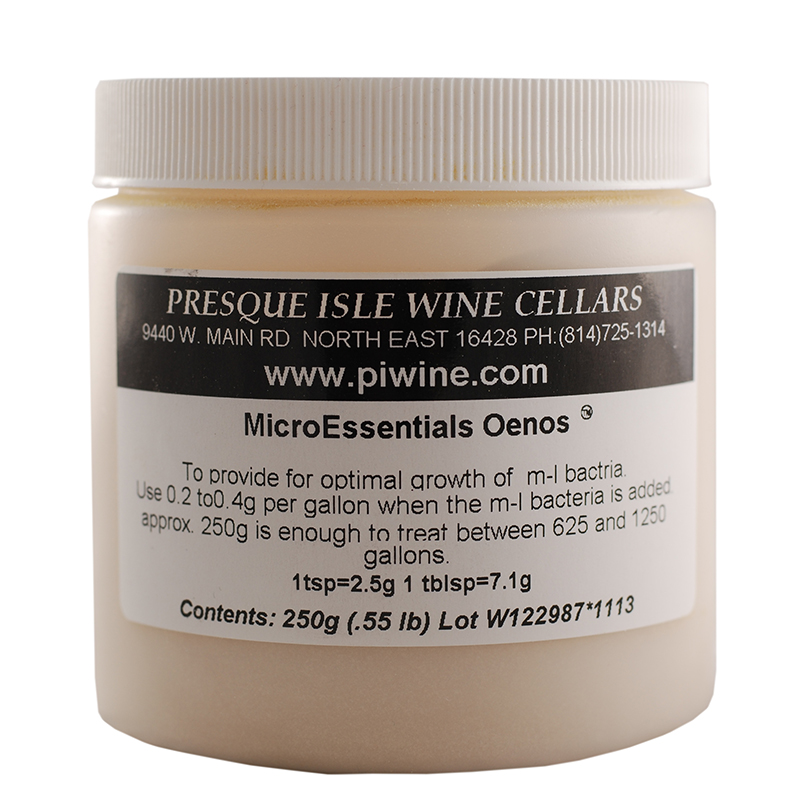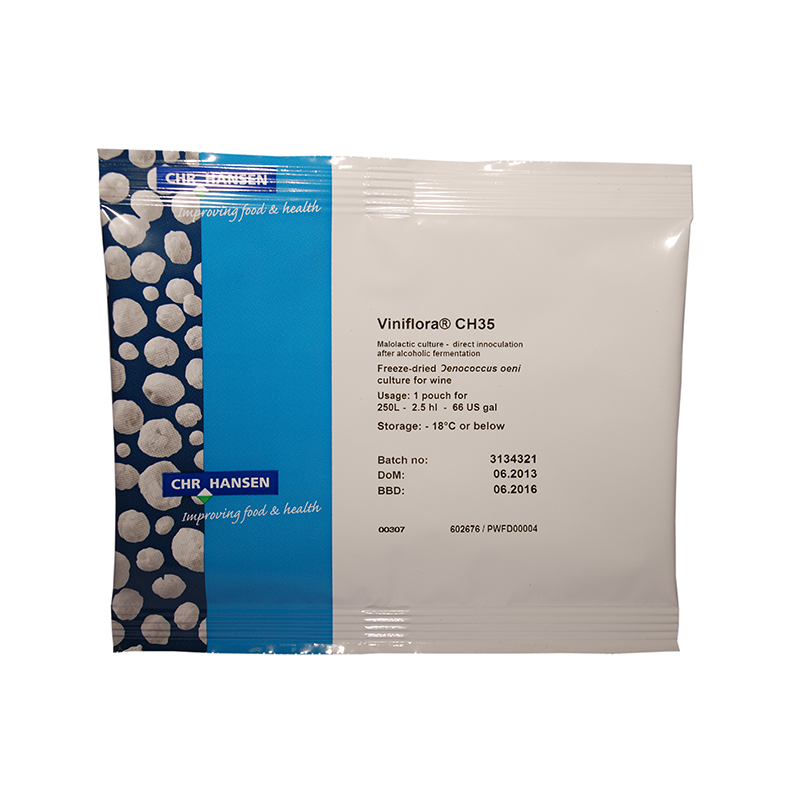Shop by Category
Introduction to Malolactic Fermentation in Wine
What is Malolactic Fermentation in Winemaking and Why Do I Need It?
A malolactic fermentation (MLF) is a wine bacterial fermentation by Leuconostoc oenos or Lactobacillus spp, which converts malic acid into lactic acid and carbon dioxide. It can be achieved with the use of malolactic cultures to initiate the MLF.
Wines which have gone through malolactic fermentation will typically be 0.2% to 0.4% lower in total acidity, 0.2 to 0.3 higher in pH and will be softer in character. Fruitiness will be reduced, but the wine will be more complex.
Malolactic fermentation is often very desirable in dry reds and in such dry white wines as Chardonnay and Viognier. Because it does reduce fruitiness, it is almost never desirable for 'fruity' Germanic style wines such as Riesling or Gewurztraminer, nor in any sweet wine.
If a wine is excessively high in acid, a malolactic fermentation may be an excellent way to reduce that acid to a more satisfactory level. Malolactic fermentation can produce a wine that has more complex vinous aromas and can improve biological stability in the wine. If a malolactic fermentation is encouraged, DO NOT add potassium sorbate or potassium metabisulfite until the malolactic fermentation is complete.
You may still want to have a malolactic fermentation occur with a low acid red wine to achieve a higher level of complexity, however, an acid adjustment upward may be needed. Malolactic fermentation can occur spontaneously, but not always by desirable bacterial strains. In these cases, off odors are likely to develop, especially in wines with higher pH.
For this reason we recommend the use of a malolactic culture for a more controlled and successful malolactic fermentation.
How Do I Achieve Malolactic Fermentation in My Wine?
Malolactic fermentation in wine can be achieved by using the correct malolactic culture. We carry quality Viniflora cultures produced by Chris Hansen's Lab, and will be happy to assist you in choosing which malolactic culture is right for the grape or fruit, and the style of wine you are trying to achieve, whether you are a home winemaker or commercial winery.
When Should I Add the Malolactic Culture?
There are differing opinions as to when the ideal time is to inoculate wine with malolactic cultures, or bacteria. Some say toward the end or at the end of the wine's yeast fermentation. There seems to be a growing trend towards co-inoculation, which means conducting the yeast fermentation and the malolactic fermentation at about the same time.
 The malolactic cultures, or bacteria, may be added just a few days after the yeast was added. The addition of an organic malolactic nutrient especially created for malolactic bacteria (such as Micro Essentials Oenos) will improve the growth conditions for the bacteria and will encourage a faster, more successful malolactic fermentation. The nutrient use is certainly good but not always required. It is very difficult at best to see a MLF occur, but in a wine with no residual sugar, the presence of gas bubbles and a drop in acidity indicates malolactic fermentation.
The malolactic cultures, or bacteria, may be added just a few days after the yeast was added. The addition of an organic malolactic nutrient especially created for malolactic bacteria (such as Micro Essentials Oenos) will improve the growth conditions for the bacteria and will encourage a faster, more successful malolactic fermentation. The nutrient use is certainly good but not always required. It is very difficult at best to see a MLF occur, but in a wine with no residual sugar, the presence of gas bubbles and a drop in acidity indicates malolactic fermentation.
Also see Instructions for Using Malolactic Cultures.
Other Conditions to Encourage Malolactic Fermentation in My Wine
Malolactic fermentation is more likely to occur if the wine is stored in an oak container (especially one in which MLF's had occured in prior batches). Malolactic fermentation is inhibited when free SO2 levels are above 20 ppm, the temperature is below 60° F, fumaric acid or lactozyme (lysozyme) has been added, or the pH is below 3.20.
In addition to the other parameters mentioned, the wine should never exceed 77° F, as that can kill the bacteria. Optimum temperature is 68° to 72° F. If all conditions are optimal, a malolactic fermentation should take about 4 weeks to complete. It may not be wise to try to stretch a culture to grow to do larger gallonage than designed because the bacteria is slow to grow.
Using Paper Chromatography to Track the Progression of Malolactic Fermentation
Before bottling or making additional adjustments to wine that has undergone malolactic fermentation, it is important to determine if the MLF is yet complete.
Paper Chromatography uses butanol-formic acid solvent and bromocresol green indicators to pick up a dried juice, wine, or must sample on a sheet of chromatography paper. As the solvent advances on the paper, each acid is deposited at a point that is specific to the percent of the total distance traveled by the solvent. Comparing the wine sample acid spots present to the acid standard spots will show the progress of the fermentation.

